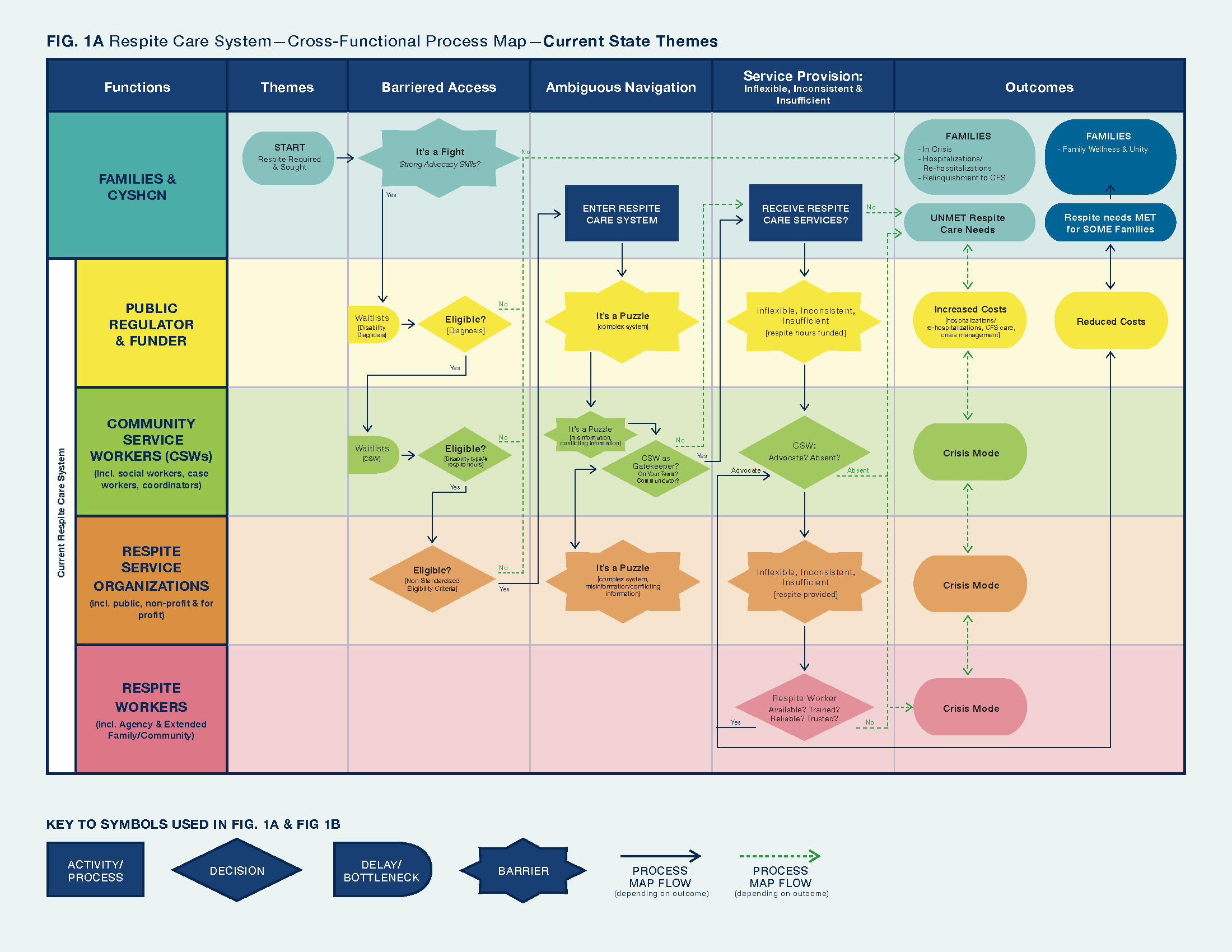Challenges and Recommendations for Advancing Respite Care for Families of Children and Youth with Special Health Care Needs
A QUALITATIVE EXPLORATION
INTRODUCTION
Caring for children and youth with special health care needs (CYSHCN) is a significant undertaking for families. While respite care is intended to address this burden, demand continues to exceed supply. Exploring the perspectives of respite service providers (SPs) and stakeholders (SKs) provides unique insight into families' needs and respite care systems.
Methods
We conducted semistructured interviews with 41 respite care SPs and SKs across four Canadian provinces to ascertain perspectives on current and ideal respite care for families of CYSHCN. The analysis included delineating units of meaning from the data, clustering units of meaning to form thematic statements and extracting themes. The second‐level analysis involved applying themes and subthemes to cross‐functional process maps.
FINDINGS
Participants noted the critical, but sometimes absent role of Community Service Workers, who have the ability to support families accessing and navigating respite care systems. SPs and SKs identified current respite systems as operating in crisis mode. New findings suggest an ideal respite care system would incorporate advocacy for families, empower families and value CYSHCN, their families and respite workers.
Conclusions
The evidence of unmet respite care needs of families of CYSHCN across Canada has long been available. Our findings identifying respite system challenges and solutions can be used by funders and policymakers for planning and enhancing resources, and by healthcare professionals, respite care providers and SKs to understand barriers and take action to improve respite outcomes to meet the respite needs of all families and CYSHCN.
PATIENT OR PUBLIC CONTRIBUTION
The research team is composed of patients, researchers, clinicians and decision‐makers along with our Family Advisory Committee (FAC) composed of members of families of CYSHNC. The FAC was formed and met regularly with research team members, knowledge users and collaborators throughout the study to provide input on design, review themes and ensure findings are translated and disseminated in a meaningful way.


